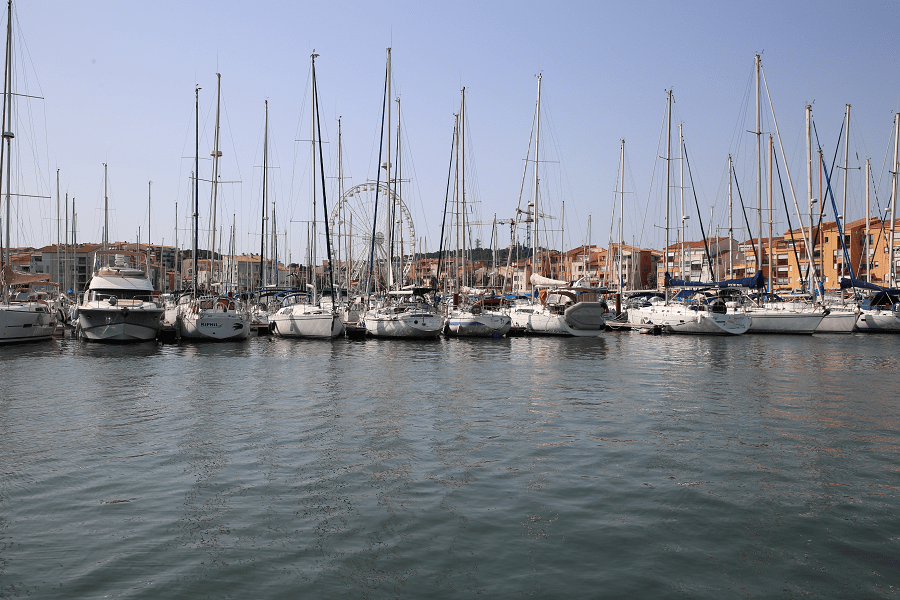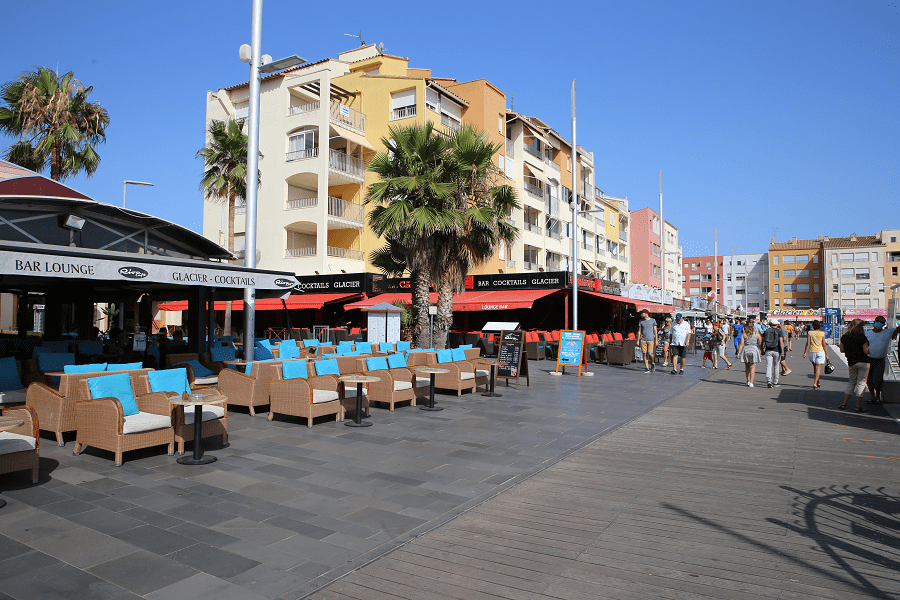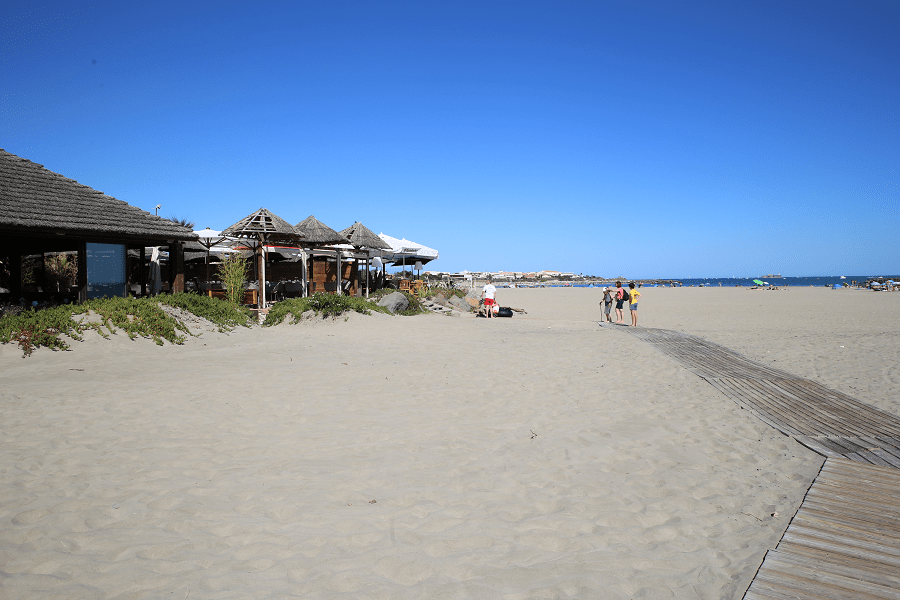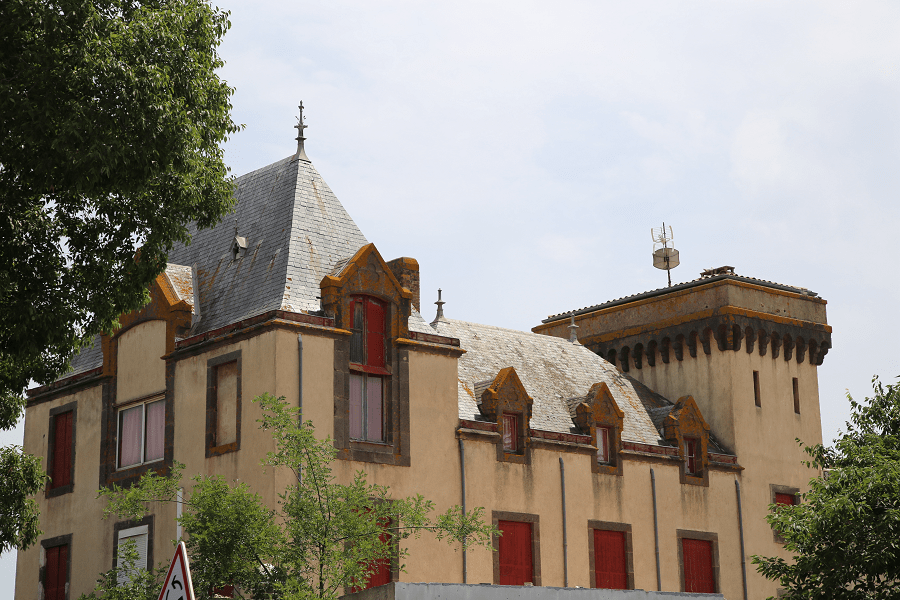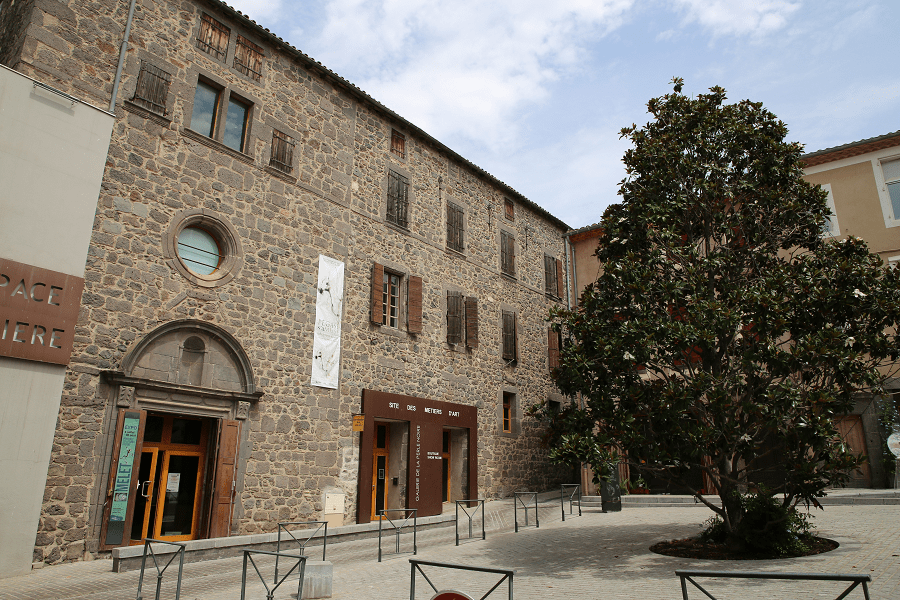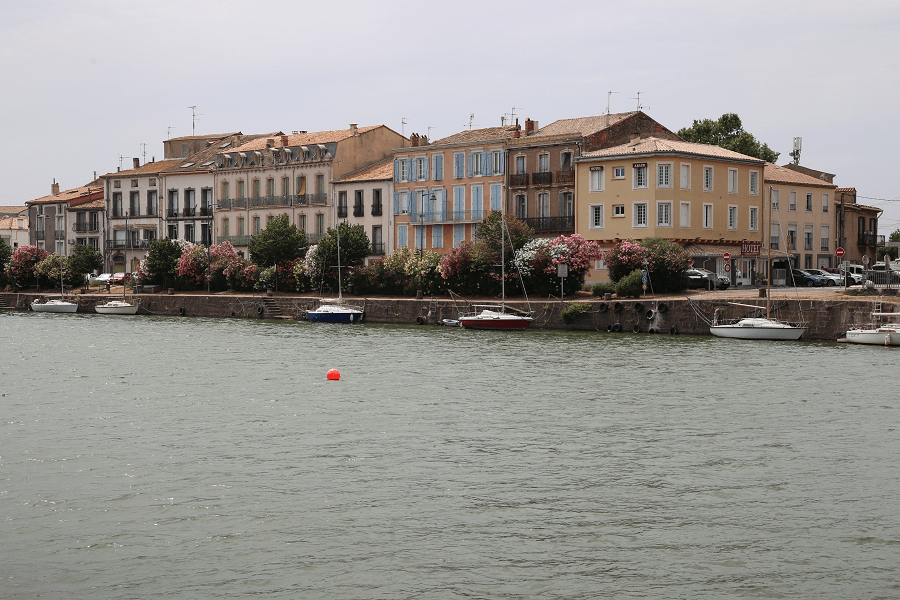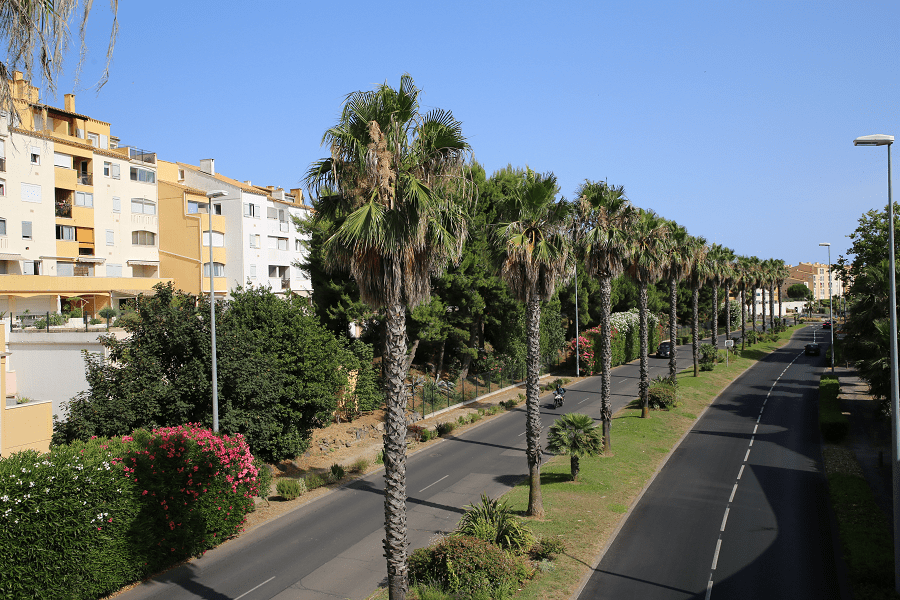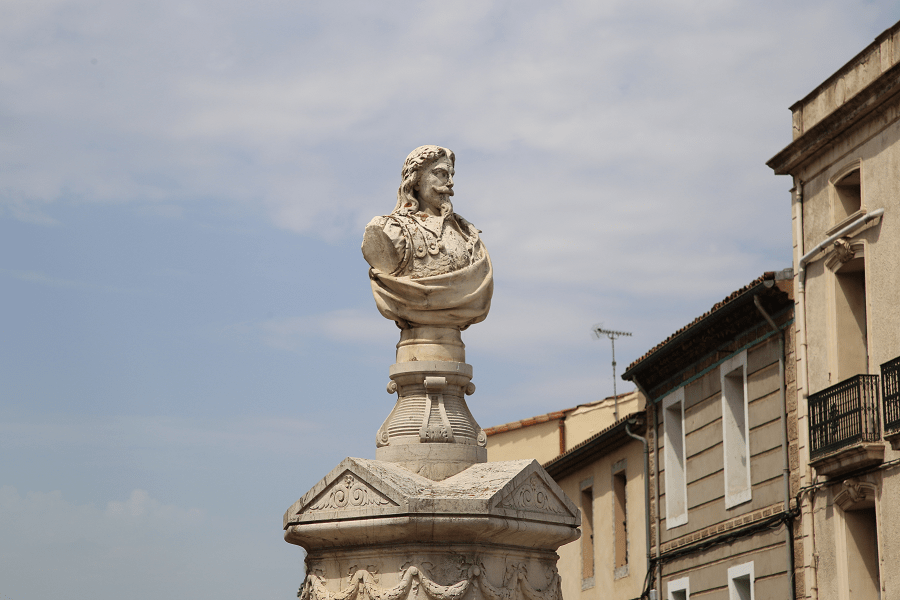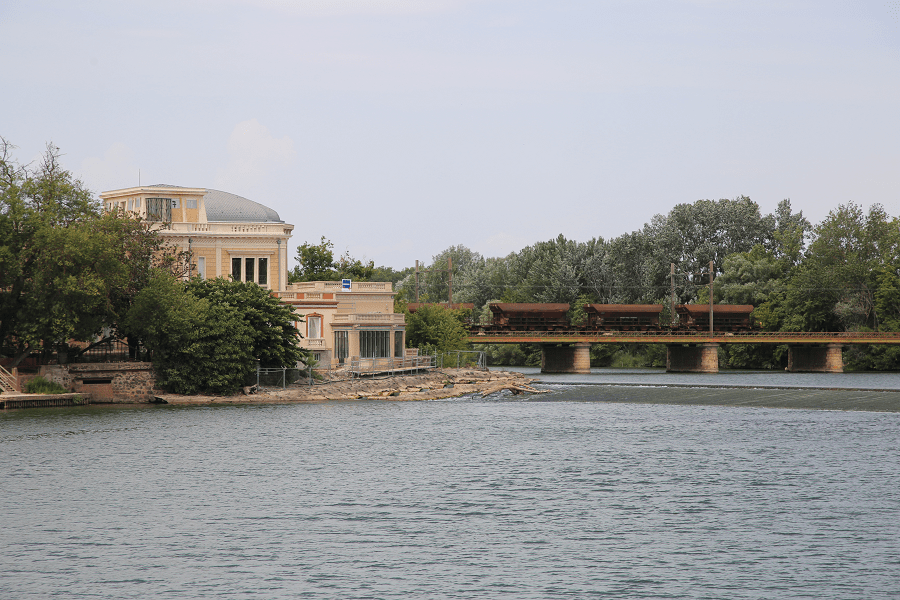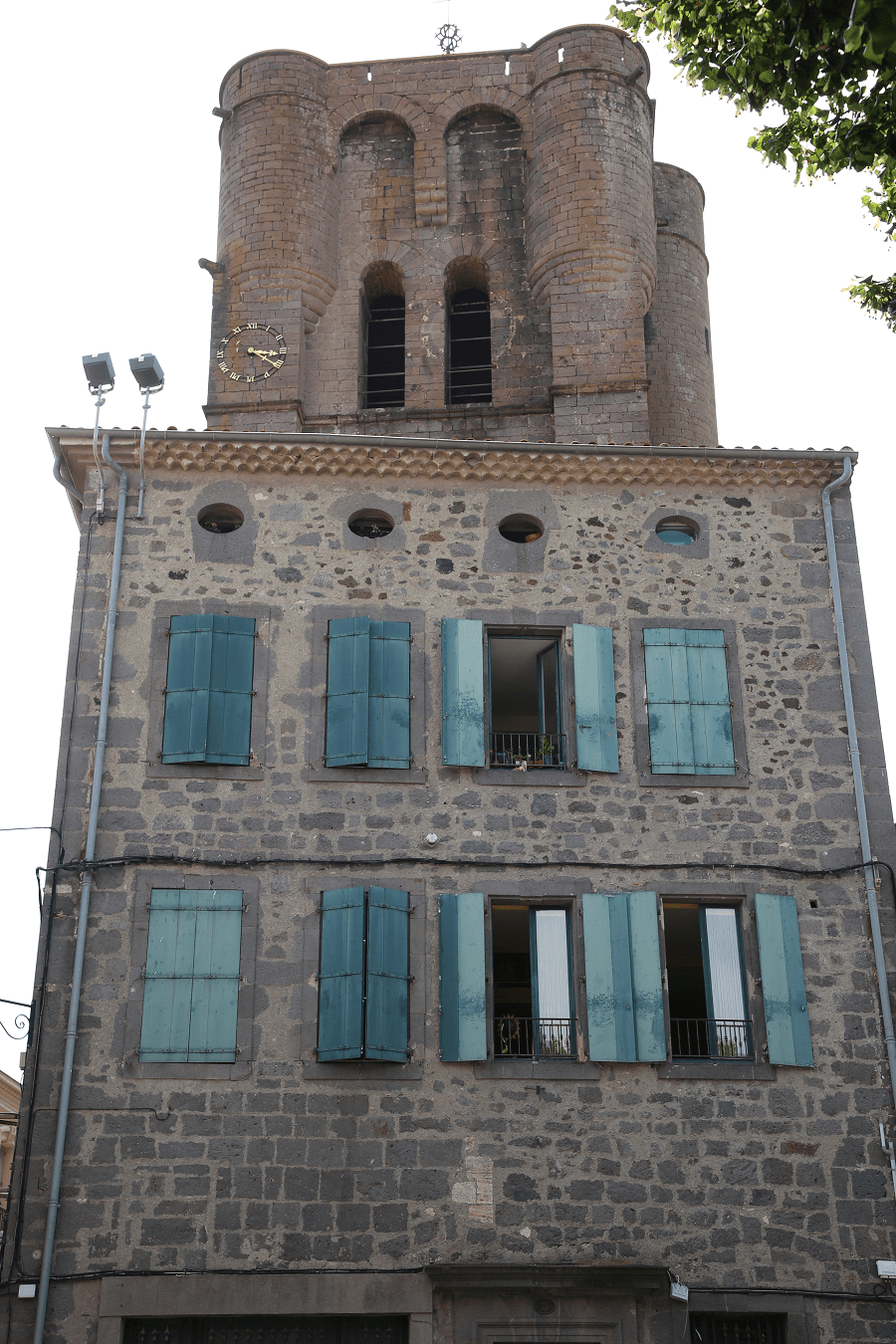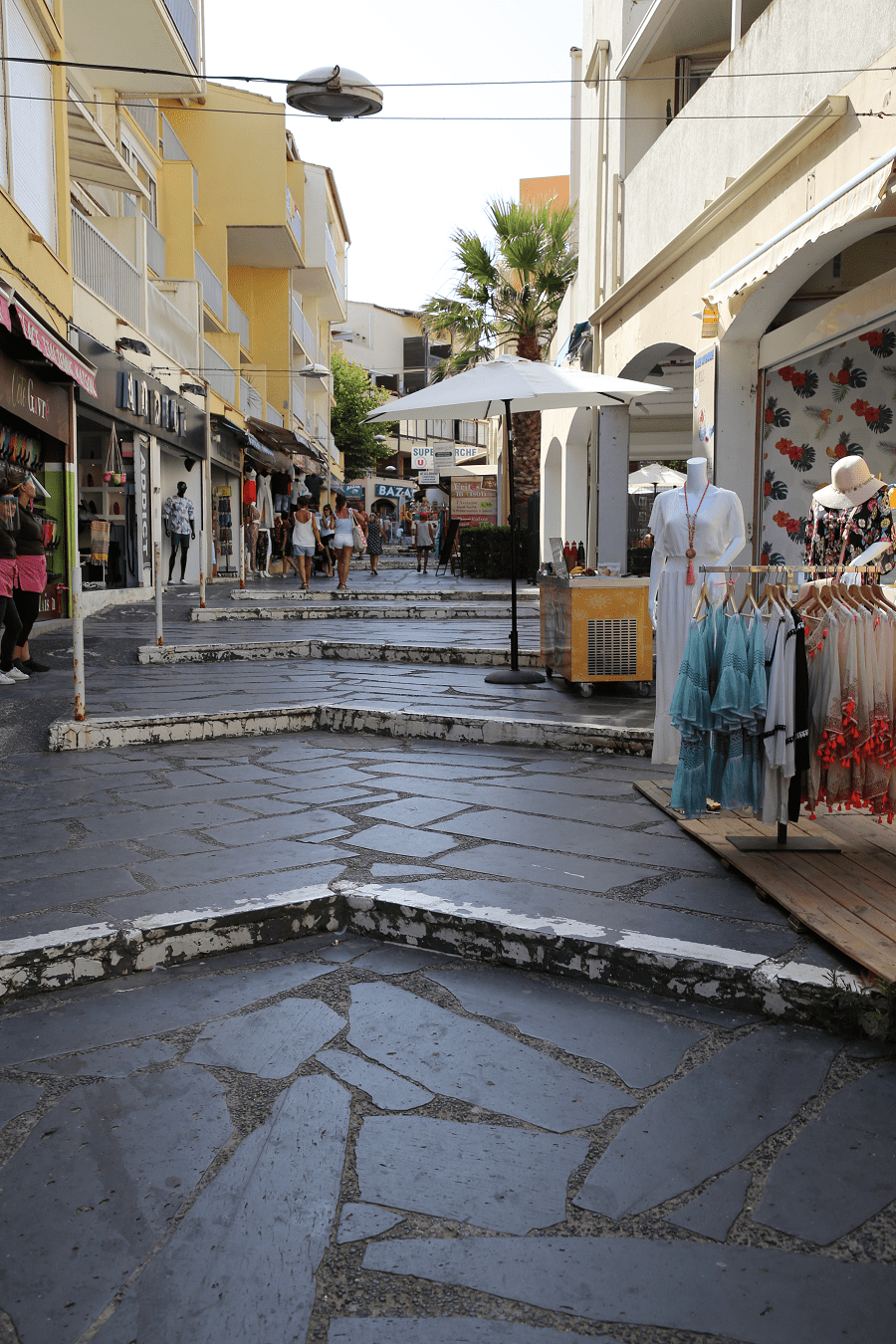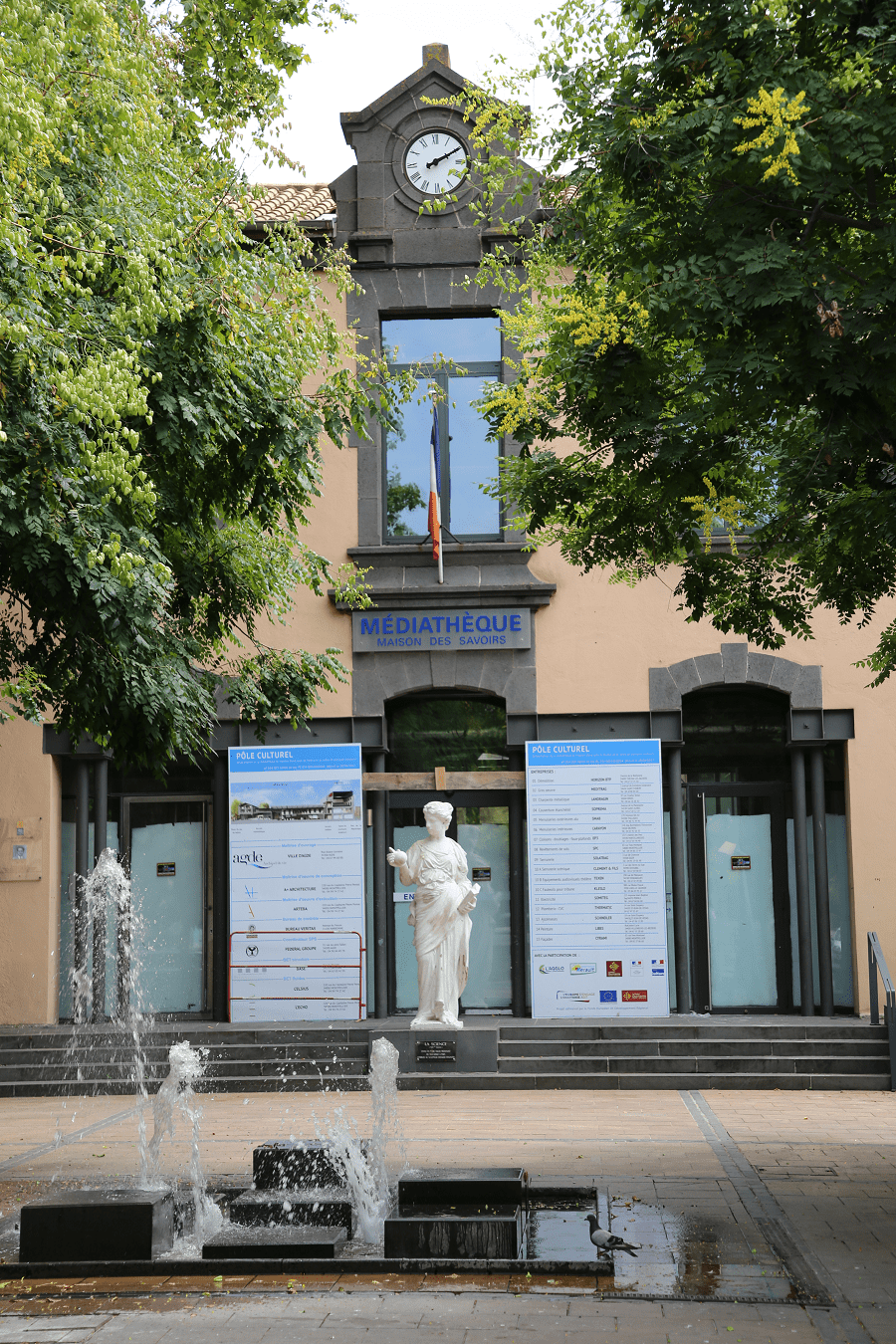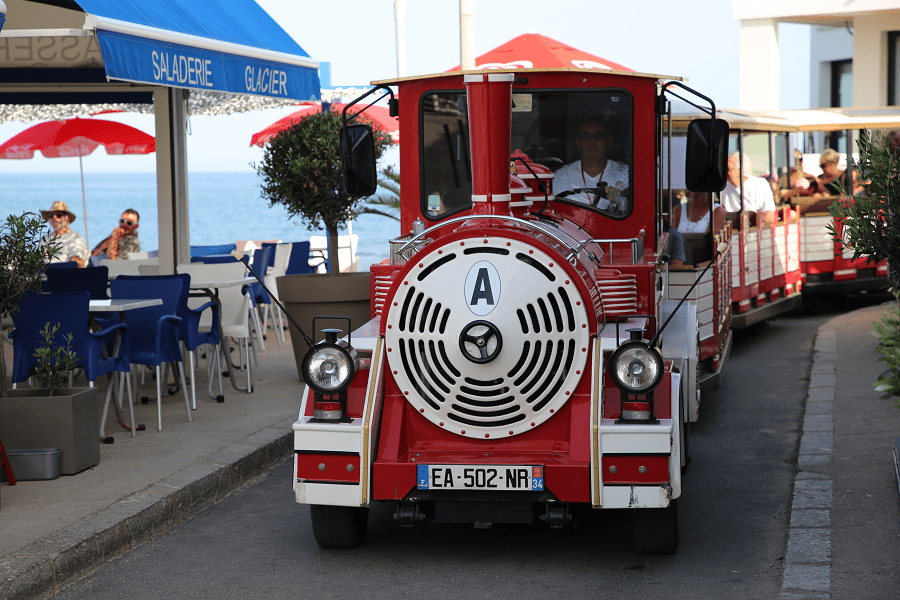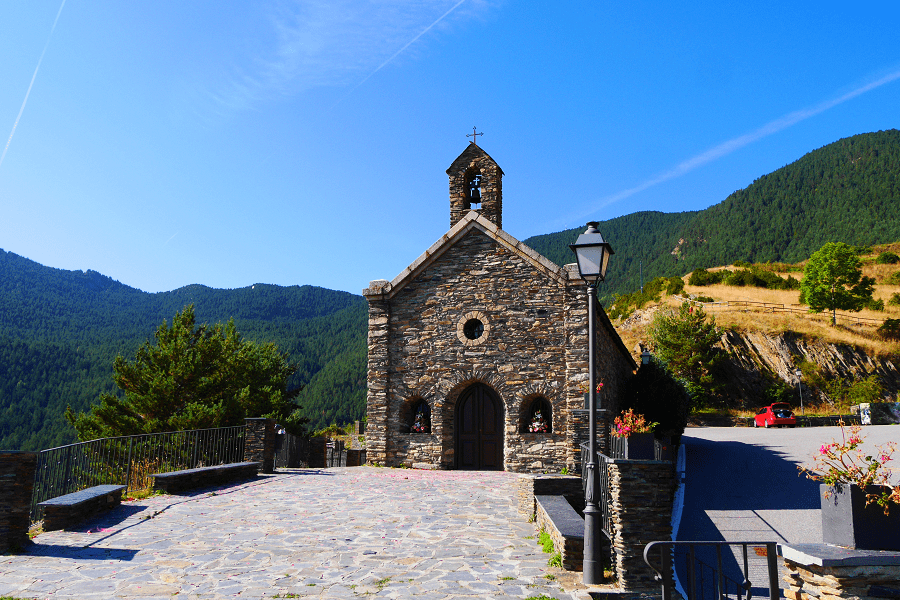Agde (fr. Agde) is a commune in the Hérault department in southern France (Occitania). It is the Mediterranean port of the Canal du Midi.
It’s a popular part of the Amethyst Coast of the Mediterranean resorts of France.
The city of Agde, sometimes nicknamed “the black pearl of the Mediterranean” because of its monuments built in basalt stone, has a long history. Populations are known from the end of the Bronze Age on the site of La Motte (tenth century BC). The Phoenicians are present in the sixth century BC. J. – C. and come from Massalia (Greek name of Marseilles in Antiquity).
From the beginning of the fifth century and until the Revolution, Agde was the seat of a bishopric. Faced with the bishop, who held the temporal power of the Viscount of Agde in the twelfth century, the city was early, around the beginning of the thirteenth century, administered by consuls, a foreshadowing of modern municipalities.
A port city since Antiquity, favoured towards the end of the seventeenth century by the opening of the Canal du Midi, Agde for a long time drew most of its income from maritime trade and fishing. The city suffered the decline of its port on the Hérault, five kilometres from the sea, outclassed by that of Sète upon the arrival of steamships. At the beginning of the twentieth century, the town thrived on fishing and agriculture (viticulture).
It has undergone a new phase of development since the construction, in the years 1970-1980, of the seaside resort of Cap d’Agde, as part of the tourist development of the Languedoc-Roussillon coast. It has become one of the main marinas in the Mediterranean, the leading tourist resort in Europe by its accommodation capacity, and enjoys international fame, in part due to its naturist district.
The town, however, suffers from a high unemployment rate and its economy is marked by the importance of seasonal jobs linked to summer tourism. If the city has about 30,000 permanent inhabitants in 2020, the population can reach 200,000 during the summer season, when it becomes the second city of Languedoc-Roussillon.
Resort and beaches
Cap d’Agde (fr. Cap d’Agde) is a seaside resort on France’s Mediterranean coast about 5 km from the centre of Agde (nine minutes by car). Cap d’Agde was planned by architect Jean Le Couteur as part of one of the largest state-run development schemes in French history. In the 1960s, the only buildings at the Cap were small houses that were typically used by locals over the weekends. It is now one of the largest leisure ports on the French Mediterranean.
Agde is extremely committed to preserving its coasts and fighting against pollution. The European Blue Flag flies over ten Agde beaches and guarantees high quality water for swimmers. Regular checks of water quality, projects to protect the marine environment and dunes and frequent beach cleaning are just some of the actions undertaken to preserve this natural heritage.
Main beaches:
Plage Richelieu, Rosalys Beach, Palm Beach, La Roquille, Plage de Rochelongue (good for kids), Service d’Accueil du village naturiste, Plage de la Baie de l’Amitié, Côté Mer, Bounty Plage, Jungle Beach, Bianca Beach, Sun 7 Beach Club Plage privée, Plage la Redoute.
Cap d’Agde has a large family-style naturist resort. The Village Naturiste is a large fenced-off part at the north-eastern edge of Cap d’Agde, although it is accessible along the public beach from the east. It is a self-contained town (sometimes referred to as the “Naked City”), where nudity is legal and common in the whole resort.
Main attractions and interesting places
Saint-Etienne cathedral, listed as a historic monument in 1840187, is the city’s main monument. It is a very austere Romanesque fortified church, built in the twelfth century, entirely in black basalt lava. The bell tower, in the form of a keep, 35 meters high, dates from the fourteenth century. It was consecrated a cathedral in 1453. It contains an altarpiece in Caunes marble from the eighteenth century placed behind the high altar and a pulpit in marble also from the eighteenth century, both listed in 1840. The bishops of Agde as well as the privateer Claude Terrisse were buried there.
The Saint-André church, listed as a historic monument in 1984, built in the fifth century, has since been profoundly altered. It was the seat of the Council of Agde in 506.
The Saint-Sever church, known as the fishermen’s church, is in the southern Gothic style. It was built in 1499 on the site of a Romanesque church, some elements of which are still visible. This church was restored and greatly modified in 1953 following the collapse of the vault in 1922. It contains a statue of the Holy Christ in polychrome wood dating from the sixteenth century, classified as an object in 1911.
The Notre-Dame-du-Grau church is in Grau-d’Agde, near the banks of the Hérault, two kilometers south of Agde. It was built in 1584, as well as a Capuchin convent, by Constable Henry I of Montmorency by enlarging an old chapel from the fifth century.
The chapel of Agenouillade, also in Grau-d’Agde, near the previous one, was also built by the constable of Montmorency. This small chapel shelters a rock which, according to legend, bears the mark of the knees of the Virgin whose kneeling appearance would have made reverse the waves which threatened the city in the fifth century. It houses a statue of the Virgin and Child in white marble classified as an historical object in 2001.
Several other religious buildings have been abandoned or destroyed. Located on Place Molière, two chapels of the former Notre-Dame convent built around 1630, whose nuns were driven out during the Revolution, first converted into barracks for the army, have since experienced various vicissitudes: the large chapel, restored in 1983, became a municipal exhibition hall (the “Espace Molière”), while the small adjacent chapel housed until 2008 the tourist office. The chapel of the school of the Ladies of the Nativity, transformed by the municipality into a girls’ school (Anatole France school), also serves as an exhibition hall; it was built in 1883 in a neo-gothic style. The old chapel of the Canal du Midi, built in 1773 near the Riquet hotel, is a private house today.
Museums
There are two museums in Agde:
The Jules Baudou Agathois Museum is a municipal museum of popular arts and traditions, created in 1932. It was labeled Musée de France in 2002;
The Musée de l’Éphèbe, an underwater archeology museum (Le Cap-d’Agde), inaugurated in 1985, was built to accommodate and present to the public the Éphèbe d’Agde. The museum presents the result of nearly 60 years of archaeological discoveries in the river, the sea and the lake of Thau.
Aquarium Marin du Cap d’Agde
Aquarium Marin du Cap d’Agde is also one of the most interesting attractions of the resort.
Address: 11 rue des 2 Frères
34300 CAP-D’AGDE
Prices:
Full price 7.80 €
Child rate 5.90 €
Europark Vias Plage
A very large amusement park with more than 80 attractions located on more than 7 hectares. Created in 1985.
Address: Voie Communale du Tricot et des Tots, 34450 Vias
Working hours:
Saturday 8PM–2AM
Sunday 8PM–2AM
Monday 8PM–2AM
Tuesday 8PM–2AM
Wednesday 8PM–2AM
Thursday 8PM–2AM
Friday 8PM–2AM
Gastronomy and restaurants
Traditional Agathoise cuisine is essentially based on fish, with recipes such as monkfish with agathoise, bourride with agathoise… It was illustrated by chef Nicolas Albano (1938-2005) who officiated at the hotel-restaurant “La Tamarissière”, in a place of the same name, which he managed between 1976 and 2004.
There is one Michelin list restaurants in the city: Le Bistro d’Hervé, 47 rue Brescou, Modern Cuisine.
Shopping
Main shopping in Agde is concentrated in the streets of Cap d’Agde. The main hypermarket is outside the resort, direction A9 to the Hyper U shopping Center at Agde.
How to get to?
Shortest distance by car from the nearest French cities:
From Paris (tolls): 7 hr 27 min (760 km) via A71 and A75
From Menton (tolls): 4 h 21 min (415 km) via A8
From Beaulieu-sur-Mer (tolls): 4 h 20 min (401 km) via A8
From Villefranche-sur-Mer (tolls): 4 h 21 min (391 km) via A8
From Nice (tolls): 4 h 6 min (384 km) via A8
From Cagnes-sur-Mer (tolls): 3 h 48 min (373 km) via A8
From Antibes (tolls): 3 h 54 min (370 km) via A8 and A9
From Cannes (tolls): 3 h 48 min (358 km) via A8 and A9
From Mandelieu-La Napoule (tolls): 3 h 26 min (348 km) via A8 and A9
From Fréjus (tolls): 3 h 20 min (326 km) via A8 and A9
From Saint-Raphaël (tolls): 3 h 26 min (329 km) via A8 and A9
From Sainte-Maxime (tolls): 3 h 25 min (330 km) via A8 and A9
From Saint-Tropez (tolls): 3 h 46 min (330 km) via A8 and A9
From Cavalaire-sur-Mer (tolls): 3 h 53 min (336 km) via A8 and A9
From Toulon (tolls): 3 h 4 min (292 km) via A9
From Aix-en-Provence (tolls): 2 h 26 min (215 km) via A9
From Nîmes (tolls): 1 h 21 min (115 km) via A9
From Marseille (tolls): 2 h 31 min (227 km) via A9
From Avignon (tolls): 1 h 38 min (154 km) via A9
From Montpellier (tolls): 57 min (66.2 km) via A9
From Sète: 35 min (23.9 km) via D2
From Pézenas: 28 min (20.8 km) via D13
From Béziers: 32 min (25.3 km) via D612
From Perpignan (tolls): 1 h 14 min (119 km) via A9
From Argelès-sur-Mer (tolls): 1 h 33 min (146 km) via A9
From Collioure (tolls): 1 h 39 min (154 km) via A9
From Narbonne (tolls): 46 min (58.9 km) via A9
From La Baule-Escoublac (tolls): 8 h 5 min (866 km) via A62
From Saint-Nazaire (tolls): 8 h 3 min (852 km) via A62
From Nantes (tolls): 7 h 18 min (788 km) via A62
From Saumur (tolls): 6 h 45 min (728 km) via A71 and A75
From Les Sables-d’Olonne (tolls): 7 h 16 min (776 km) via A62
From Cognac (tolls): 5 h 28 min (563 km) via A62 and A61
From Angoulême (tolls): 5 h 23 min (561 km) via A62 and A61
From Eauze (tolls): 3 h 42 min (335 km) via A61
From La Rochelle (tolls): 5 h 54 min (625 km) via A62
From Rochefort (tolls): 5 h 31 min (597 km) via A62
From Saintes (tolls): 5 h 13 min (561 km) via A62 and A61
From Arcachon (tolls): 4 h 46 min (499 km) via A62 and A61
From Royan (tolls): 5 h 36 min (565 km) via A62 and A61
From Biarritz (tolls): 4 h 49 min (507 km) via A64 and A61
From Saint-Jean-de-Luz (tolls): 4 h 53 min (513 km) via A64 and A61
From Bayonne (tolls): 4 h 39 min (495 km) via A64 and A61
From Dax (tolls): 4 h 39 min (474 km) via A64 and A61
From Lourdes (tolls): 3 h 39 min (373 km) via A64 and A61
From Pau (tolls): 3 h 53 min (390 km) via A64 and A61
From Périgueux (tolls): 4 h 35 min (481 km) via A20 and A61
From Bordeaux (tolls): 4 h 18 min (447 km) via A62 and A61
From Toulouse (tolls): 2 h 7 min (205 km) via A61
From Carcassonne (tolls): 1 h 16 min (114 km) via A61 and A9
Shortest distance by car from the European cities:
From Monaco (tolls): 4 h 16 min (407 km) via A8
From Andorra (tolls): 3 h 54 min (295 km) via A61
From Barcelona (tolls): 3 hr 11 min (306 km) via AP-7 and A9
From Madrid (tolls): 8 hr 58 min (912 km) via A-2
From Moscow (tolls): 36 hr (3,332 km) via E30/M1
From Belgrade (tolls): 17 hr 28 min (1,712 km) via E70
From Istanbul (tolls): 28 hr (2,660 km) via E70
From Bern (tolls): 6 hr 26 min (665 km) via A1
Main information
Area: 50.8 sq. km
Population: 28.600
Languages: French
Currency: euro
Visa: Schengen
Time: Central European UTC +1
Coordinates: 43°18′39″N 3°28′33″E
See here best sea and ocean resorts of France and Spain (223 objects)
See here Pyrenees travel guide
See here France travel guide
See here Spain travel guide



